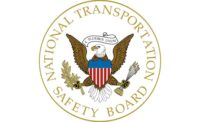Just before a deadly train collision in Granite Canyon, Wyoming, the crew of one of the trains involved radioed the company dispatch center to tell them that due to problems with the train’s airbrake system, they’d accelerated to 50 mph and were unable to stop.
The engineer and conductor of that UP freight train would both die a short time later, when their train collided with the rear of a stationary UP freight train.
According to the National Transportation Safety Board’s (NTSB) ongoing investigation into the October 4, 2018 incident, the crew of the stationary train was able to deboard and clear the area in time, after a dispatcher alerted them about the danger that was racing their way. None of them were injured.
At the time of the accident, the striking train was traveling on a descending grade leading up to the point of collision. The damage caused by the collision was considerable; 3 locomotives and 57 cars of the striking train derailed while 9 cars of the stationary train derailed. Accident damage was estimated at $2.4 million.
No hazardous materials were released.
Positive train control was active at the time of the accident.
From the NTSB report:
Preliminary event recorder data from the striking train’s lead locomotive showed changes in the air flow from the locomotive to the brake pipe at specific locations. Between MP 550 and MP 545, the grade changed from ascending to descending and returned to ascending. To control the train speed, the engineer went from power to dynamic braking and then back to power to negotiate the change in grade. This caused the train slack to change from stretched to bunched as the train entered the descending grade, and the air flow changed from 24 cubic feet per minute (CFM) to 0 CFM.[1] When the engineer reapplied the power on the ascending grade at MP 544, the train was changed from bunched to stretched, and the air flow returned to about 24 CFM. At this location, the engineer was able to control the train without using the train brakes.
About 3 miles later, the striking train reached the top of Sherman Hill. The engineer gradually applied dynamic braking after cresting Sherman Hill at 14 mph near MP 541. From MP 541 to MP 539, the train slack changed from stretched to bunched as more of the rear of the train came over the top of the hill and pushed against the dynamic braking being applied on the locomotives. The striking train’s event recorder indicated that the air flow went from a steady 28 CFM to 0 CFM when the slack in the train changed from stretched to bunched.
The air flow meter shows how much air the locomotive is providing to the brake pipe to compensate for leakage and maintain the required pressure. If the air flow suddenly drops to 0, the locomotive is no longer providing air to the brake pipe. When the train slack was bunched or compressed after MP 540 and the air flow changed from 28 CFM to 0 CFM, the air pressure at the rear of the train was 87 pounds per square inch (psi). While the engineer was controlling the train speed with just the dynamic braking, the pressure at the rear of the train slowly dropped. Between MP 540 and MP 536, the pressure at the rear of the train dropped to 83 psi. Normally, the rear-end brake pipe pressure would have remained at 87 psi and the air flow would have continued to read 28 CFM.
Approaching MP 536, the engineer applied the train air brakes when the train’s speed was slowly increasing from 18 mph to 19 mph. The engineer reduced the brake pipe from 89 psi to 84 psi on the locomotive. According to the event recorder, the rear-end brake pipe pressure remained at 83 psi before and after the reduction on the head end of the train. The rear-end brake pipe pressure should have normally dropped an equivalent 5 psi, lowering the pressure to 78 psi. Investigators are examining the failure of the brake pipe pressure to drop at the rear of the train when the engineer applied the brakes.
Between MP 536 and MP 530.5 the train accelerated, and the engineer continued to apply more braking. Near MP 530.5, the engineer applied the brakes with an emergency application when the train reached 29 mph. Normally, the locomotive would send a message to the end-of-train device to also apply the brakes with an emergency brake application. According to the event recorder, the end-of-train device did not make an emergency application of the brakes. Investigators are researching the reason for the communication failure. After the engineer applied the emergency application, the train continued to accelerate until reaching 56 mph as the last recorded speed.
The NTSB investigation is ongoing. Future investigative activity will focus on components of the striking train’s air brake system, head-of-train and end-of-train radio-linked devices, train braking simulations, and current railroad operating rules. Investigators will also determine if the railroad’s air brake and train handling instructions address monitoring air flow readings and recognizing the communication status with the end-of-train device.
Parties to the investigation include UP, the Federal Railroad Administration, the Brotherhood of Locomotive Engineers and Trainmen, and the International Sheet Metal, Air, Rail, and Transportation Workers-Transportation Division.



